
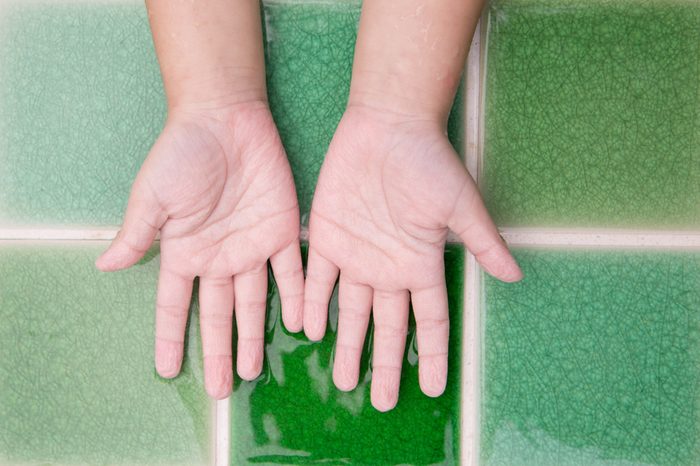
Why do my fingers get wrinkly when I’m swimming?
It may seem as if your skin is absorbing extra water during a soak in the pool or bathtub, but that’s not the case. Researchers have known since the 1930s that people with nerve damage in their fingers don’t prune up the way everyone else does. In other words, wrinkly fingers don’t happen through osmosis, according to Scientific American. Instead, it’s caused by blood vessels below the skin that constrict, which seems to have the evolutionary advantage of making it easier for us to pick up wet objects. For a 2013 study published in Biology Letters, scientists found that subjects with wrinkled fingers were faster at picking up submerged marbles (but didn’t do any better at picking up dry objects) than those with unwrinkled fingers. Learn about these accidental discoveries that changed the world.
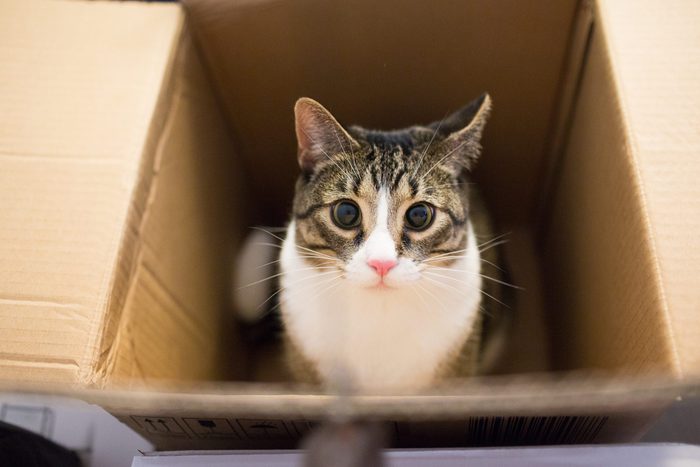
Why do cats climb into boxes?
They do it to feel safe, according to Live Science. And it’s not just your domestic tabby: Big cats also like to hide in a spot where nothing can sneak up on them. Susan Bass, director of public relations at Big Cat Rescue in Tampa, Florida, told Mental Floss that the tigers and other cats at the sanctuary will hop into any box big enough to hold them, just like the little kitty living at your house does. Here’s why cats are afraid of cucumbers.
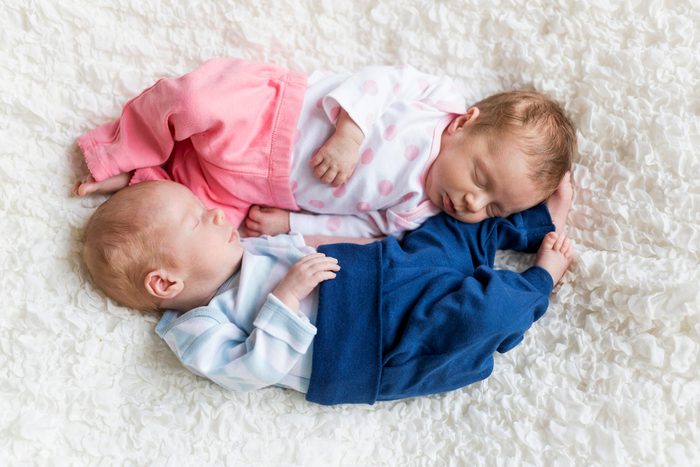
How did the colors blue and pink get assigned to boys and girls?
It seems so embedded in our culture, but it wasn’t always so; in 1927, Time magazine printed a chart showing that four major department stores suggested dressing boys in pink, according to Smithsonian Magazine. In 1918, the trade publication Earnshaw’s Infants’ Department wrote, “The generally accepted rule is pink for the boys, and blue for the girls. The reason is that pink, being a more decided and stronger color, is more suitable for the boy, while blue, which is more delicate and dainty, is prettier for the girl.” Jo B. Paoletti, a historian at the University of Maryland and author of the book Pink and Blue: Telling the Girls from the Boys in America, told Smithsonian that the color designations were pretty much arbitrary until the 1940s, when manufacturers attempted to interpret the preferences of the American audience and could easily have gone the other way.
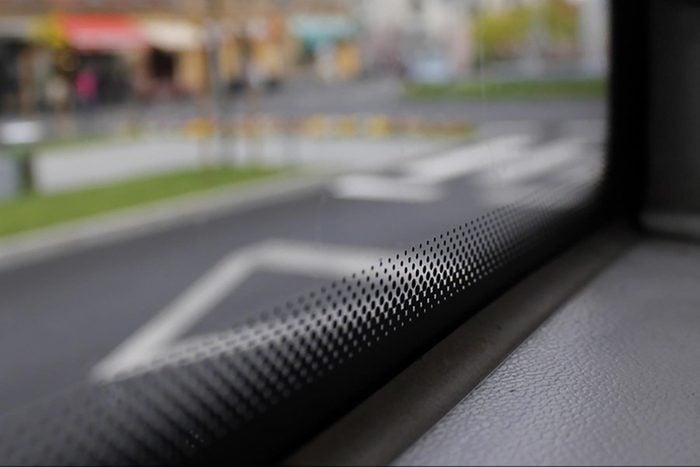
Why do car windows have little black dots?
The little black dots on your car’s windshield and windows, and the black rims that surround them, aren’t just there for decoration. The dots date all the way back to the ’50s, when car manufacturers used adhesive to hold car windows in place rather than metal trim. The black trim around the windows (called “frits”) and the black dots are painted onto the glass to hide the not very appealing look of the adhesive. The rims are actually baked into the window, so they hold the glue and window in place. The dots serve as an aesthetically pleasing transition from the thick black line to the transparent window. They aren’t just there to look nice though. They help provide temperature control. When the glass is bent to fit into the frame of the windshield, it’s heated up. The black-painted glass heats up faster than the rest, and the dots help to distribute the heat more evenly and keep the glass from warping. Here are some other weird car features you didn’t know about.

Why do we hiccup?
Believe it or not, hiccups might be an evolutionary holdover from our more fishlike ancestors, according to Smithsonian Magazine. During a hiccup, the muscles we use to inhale contract while our vocal cords are slammed shut by the tongue and the roof of the mouth. There’s no discernible purpose for hiccups in humans, but a similar pattern of movement among amphibians is useful. When tadpoles are breathing underwater during a stage when they have both lungs and gills, they take in a mouthful of water, close the opening to the lungs, and then force the water out through their gills. In both humans and amphibians, the signal initiating hiccup-like activity comes from the brain stem.

What were the first crops humans started to grow?
Crop cultivation probably started with wild varieties of peas, lentils, and barley that humans already found growing naturally around 12,000 years ago in the Fertile Crescent region of the Middle East (including modern Iraq, Jordan, Syria, Israel, Palestine, southeastern Turkey, and western Iran), according to NPR’s food blog, the Salt.
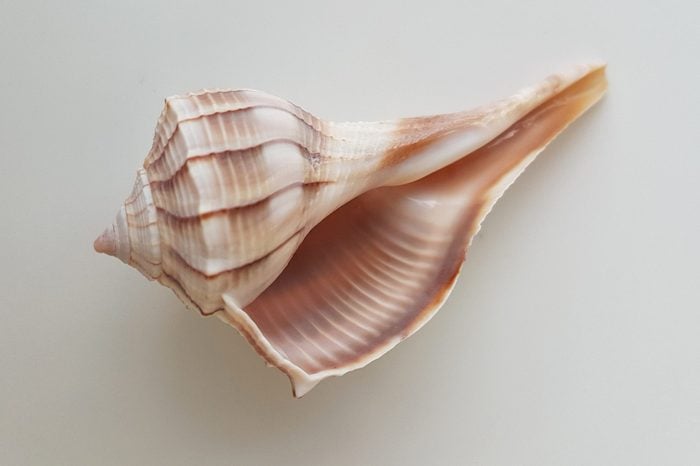
Why do seashells sound like the ocean?
It’s lovely to reminisce about your beach vacation by listening to the sound of waves in a big conch shell. Of course, that it isn’t the ocean you hear. The shape of seashells allows them to capture and reflect ambient noise, amplifying certain frequencies, so when you hold one to your ear, you’re really just hearing echoes of the quiet sounds that are already surrounding you. Nationally accredited audiologist Shruti Deshpande, PhD, an assistant professor at St. John’s University and the Long Island Doctor of Audiology Consortium, told HuffPost that empty bowls and bottles can produce similar effects. Take a look at ocean mysteries that scientists still can’t explain.

Why do humans have an appendix?
We rarely think about the appendix, a small structure near the beginning of the large intestine, until it gets infected and requires emergency surgery. Since Charles Darwin’s era, many have thought the appendix a vestigial digestive organ left over from some previous evolutionary phase of our development and no longer in use. But in recent years, scientists have realized that many other mammals (including koalas and beavers) have appendixes. The tiny organ might be part of the immune system, assisting the body’s defenses by storing healthy gut bacteria.
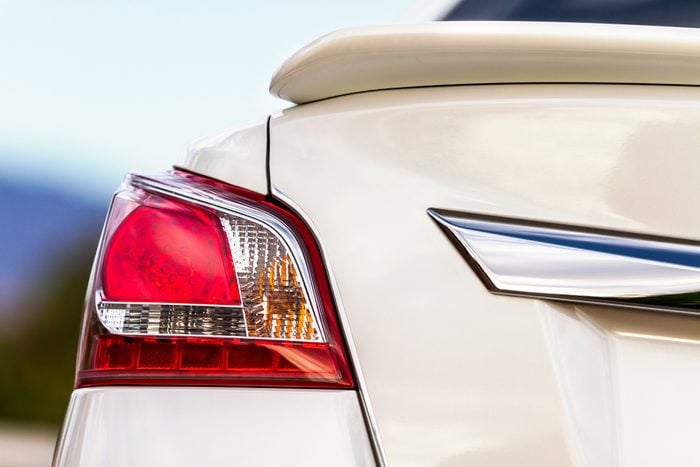
Why do cops touch the taillight on a car during traffic stops?
For decades, police officers have put their fingers on a car’s taillight as they approach the driver’s side window in order to leave fingerprints. It’s a just-in-case precaution that would prove they pulled a car over should they be injured during the encounter or go missing afterward, according to the Law Dictionary. The practice has fallen off recently, though, as dashboard and body cameras have become more commonplace.
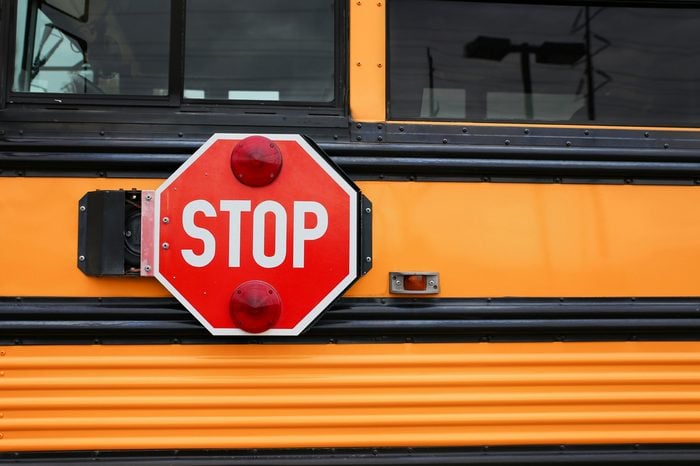
Why are school buses yellow?
The color is officially called “national school bus glossy yellow,” and it’s standard across the United States. Back in 1939, at a conference funded by the Rockefeller Foundation, transportation officials from all of the then 48 states agreed on a number of safety standards for school buses, including the color. Yellow is very visible, even in early morning or late-evening light, and black lettering on a yellow background is easy to read. It took until 1974 for all the school buses in the country to meet the standards.
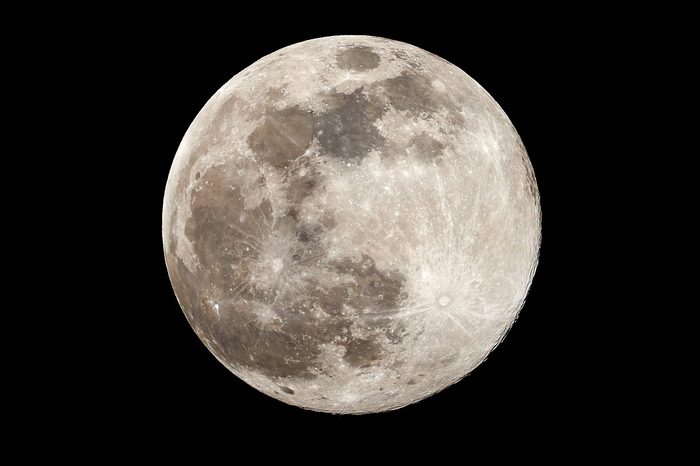
Why do we always see the same face of the moon?
Here on Earth, we can always see the “man in the moon” because the same surface faces toward us no matter where the moon is in its orbit. That’s because the moon is tidally locked with Earth, meaning that our gravitational pull keeps it rotating on its axis at a speed that’s coordinated with its orbit around our planet. We humans didn’t get a look at the moon’s other side until 1959, when the Soviet Luna spacecraft took the first photos and scientists realized it’s much different: There are few large lava seas, like the ones on the side facing us, and many more impact craters. Read about more mysteries of the moon.
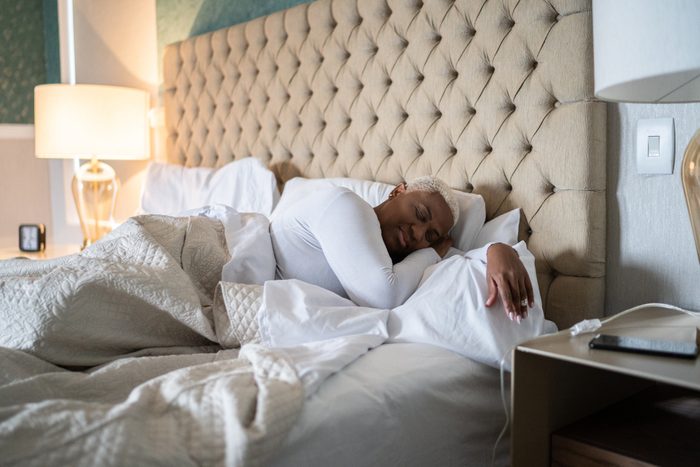
Why do we sleep?
Although the actual mechanism of sleep is still poorly understood, we do know why we need to do it. Brains seem to require downtime in order to stay organized and particularly to strengthen new neural connections that allow us to remember what we’ve learned. And we know why we shouldn’t go without: Long-term sleep deprivation can cause hallucinations, psychosis, heart disease, and immune system dysfunction. “Every physiological system in the body, and every operation of the mind, is powerfully enhanced by sleep when we get it and demonstrably impaired when we don’t get enough,” Matthew P. Walker, PhD, professor of neuroscience and psychology at the University of California–Berkeley and author of the book Why We Sleep, told Reader’s Digest.
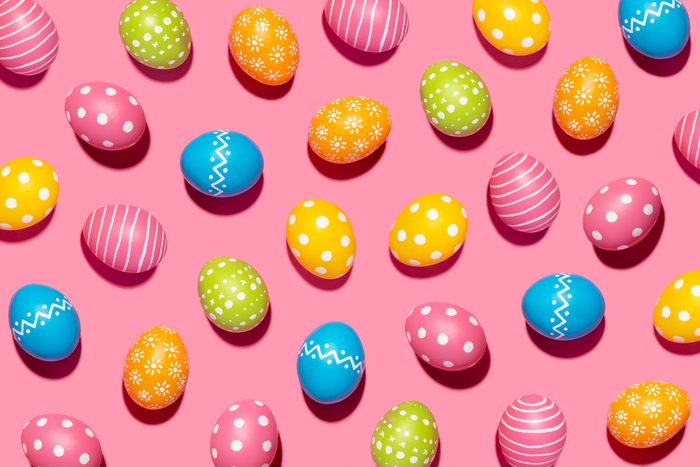
Why does a bunny deliver eggs at Easter?
The Easter bunny is probably a throwback to an ancient Anglo-Saxon myth about the fertility goddess Ostara, as religion scholar Katie Edwards writes in the Conversation. Folklorists say that Ostara changed a bird into a rabbit, which went on to lay colored eggs that she presented to children as gifts. It’s unclear how the myth was co-opted by Christians, but it’s first mentioned in late 16th-century German texts, and German Lutherans brought the Easter bunny with them to the United States in the 18th century.
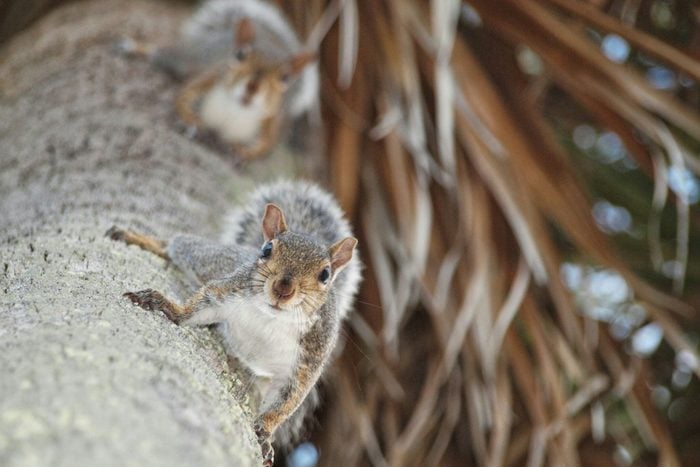
Why do squirrels chase one another?
When they go on mad sprints up and down trees and across your yard and deck, they’re probably working out their hierarchy, according to Live Science. Squirrel expert Michael Steele of Wilkes University in Pennsylvania tells the website that the most common U.S. species—the Eastern gray squirrel—doesn’t tend to be territorial but does like to let everyone know who’s boss. Not too surprisingly, young squirrels also like to chase one another around for fun, just as puppies do.

Why are some people left-handed?
About 90 percent of humans are righties, and it’s not at all clear why that proportion continues to hold. If there were a major evolutionary advantage to being left-handed, more people would have the trait; if there were a clear disadvantage, it would disappear. The latest thinking among scientists is that a large number of different genes affect handedness, according to Smithsonian Magazine. Many of the genes that have been studied play a part in the body’s left-right symmetry, and certain mutations can lead to unusual organ placements (like the heart being on the right side instead of the left).
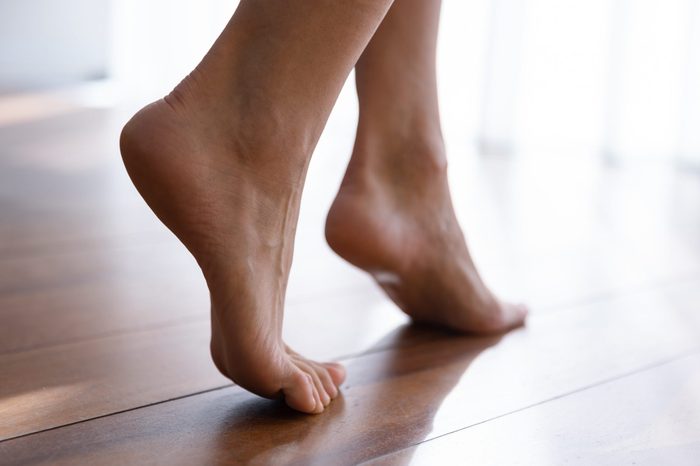
Are left-handed people also left-footed?
Footedness and handedness are more often in sync for right-handed people than for southpaws, according to Discover. Overall, most of us are likelier to favor our right hands, feet, and eyes. Fun fact: People who are left-footed are called “goofy” in board sports such as surfing, skateboarding, and snowboarding—they actually place their right foot on the front of the board.
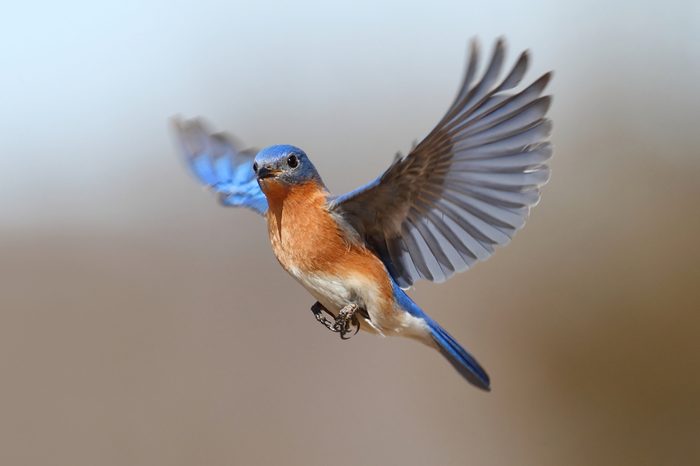
How do birds know where to migrate?
Forty percent of bird species migrate every year, with some traveling tens of thousands of miles. (Arctic terns fly about 50,000 miles every year, from pole to pole.) Migrating birds can even find their destinations if researchers make them start from unusual locations, according to an article in the Conversation by Richard Holland, senior lecturer in animal cognition at Bangor University. How do they do it? Holland and his team published a study suggesting that some songbirds use a magnetic map to navigate long distances, but nobody knows how they can detect the Earth’s magnetic field. Read about these science mysteries no one has figured out.
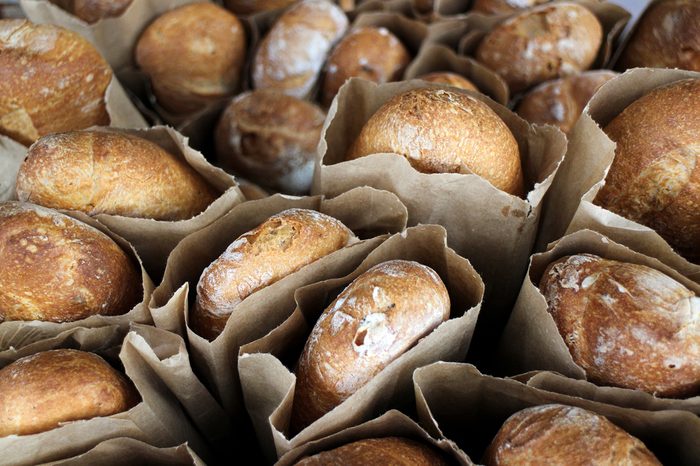
Why are there 13 in a baker’s dozen?
Bakers in medieval England are thought to have come up with the idea of tossing in an extra roll or loaf of bread to make sure their customers were happy. While 12 eggs are easy to quantify, baked goods can turn out all different sizes because of differences in how much the dough rises. Plus, many bakers didn’t have accurate scales to weigh their flour, according to Britannica. Being accused of cheating could result in punishment, including flogging, so bakers hedged their bets and included 13 (or sometimes 14) items to make sure nobody complained.
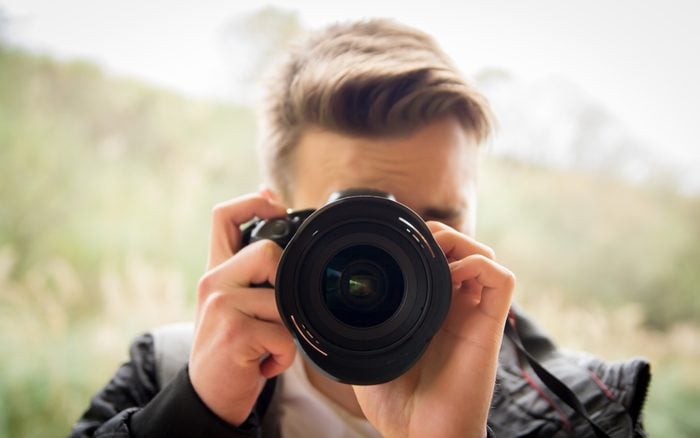
Why do we say “cheese” when we’re having our picture taken?
Saying the word cheese does make you pull your lips back and show your teeth, so if you’re trying to get a lot of people to at least approximate smiling at the same time, it’s a good start. The practice is mentioned in a 1943 Texas newspaper article, according to Today I Found Out.
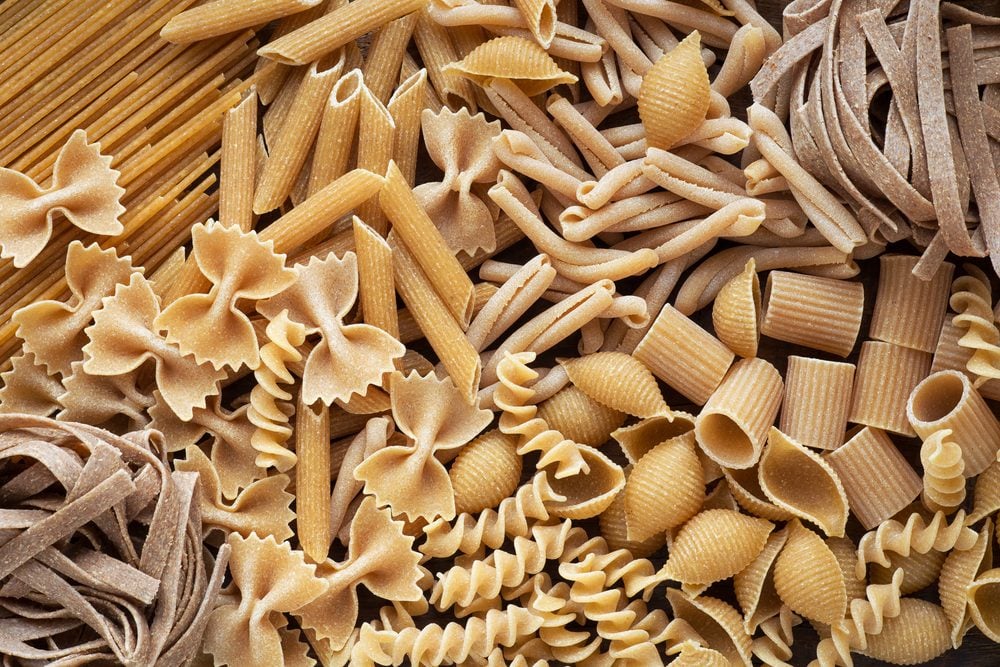
Why are there so many pasta shapes?
In researching the 2010 book The Geometry of Pasta, Caz Hildebrand and Jacob Kenedy identified more than 1,200 names of pasta shapes, according to an interview they did with NPR’s All Things Considered. Some come from industrial tools; eliche are screws, and fusilli are spindles. And then there are the strozzapreti, or priest strangers, possibly given that name because they’re so tasty, priests would try to eat too many and choke. Different shapes work better in different recipes, according to Kenedy and Hildebrand. Scoop-shaped noodles go best with lumpy sauces (where they can catch chunks); twisted pastas hold thin sauces; and long, spaghetti-like noodles pair best with cream- or oil-based sauces, according to BBC Good Food.
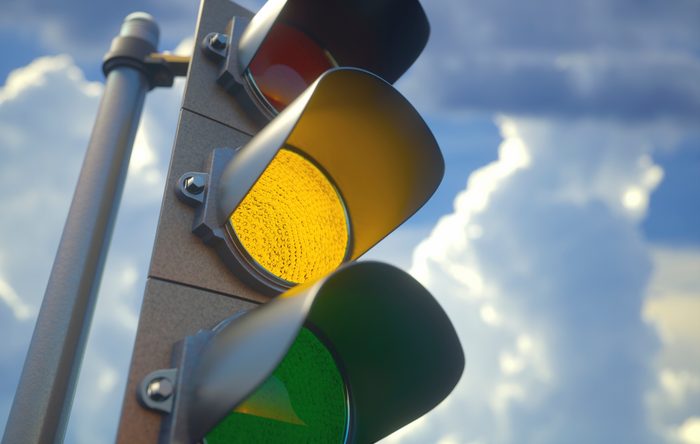
Why are traffic lights green, yellow, and red?
Red has the simplest explanation: Red has the longest wavelength of any color on the spectrum of visible light, and as such, it’s easier to see from far away than other colors, according to Thrillist. Railroad systems used red as a stop signal long before automobiles were on the roads. Trains originally used a white light to mean “go,” but engineers probably had a harder time telling it apart from the light of stars and other lanterns, so green took its place. Yellow was the original choice for stop signs because it was easier to see than red at night, but as reflective paint, streetlights, and headlights proliferated, the signs were changed over to red. Yellow is the second-easiest color to see from a distance, so it was added as the “caution” signal in traffic lights. Discover why Japan favors blue traffic lights.
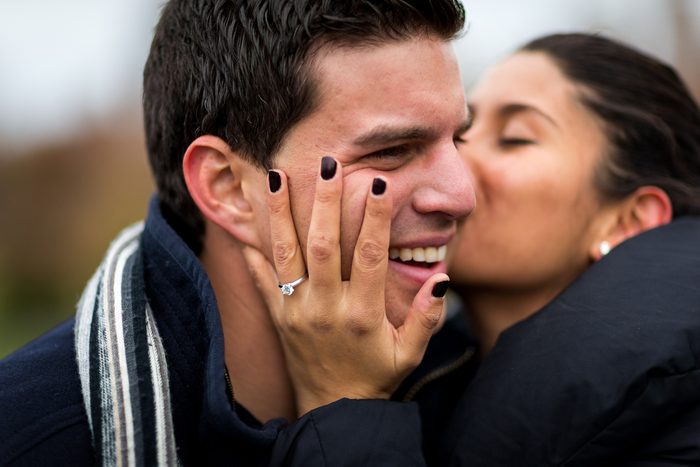
Why do we wear wedding rings on our fourth finger?
The traditions of wearing a wedding band on your fourth finger on your left-hand dates back to ancient Egypt. Egyptians saw wedding bands as a symbol of eternity and believed there was a “delicate nerve” that ran from the ring finger all the way to the heart. We now know that the heart is an organ for pumping blood, but back then they believed it was the center of our emotions. Ancient Greeks and Romans followed a similar tradition and passed on the wedding-band finger to us.

Why are most blackboards green and not black?
Before blackboards were large enough to take up an entire wall in a classroom, students would use individual-size boards made of slate or wood that had been painted black. So the first blackboards were, in fact, black. Once teachers realized they needed more space to teach their students, they put multiple boards of slate together on the wall to make bigger blackboards. Finally, as the demand for blackboards rose, companies started making them out of steel plates coated with green porcelain-based enamel instead of the traditional dark slate. This way, the boards were lighter, less fragile, and easier to ship. This is what school was like 100 years ago.
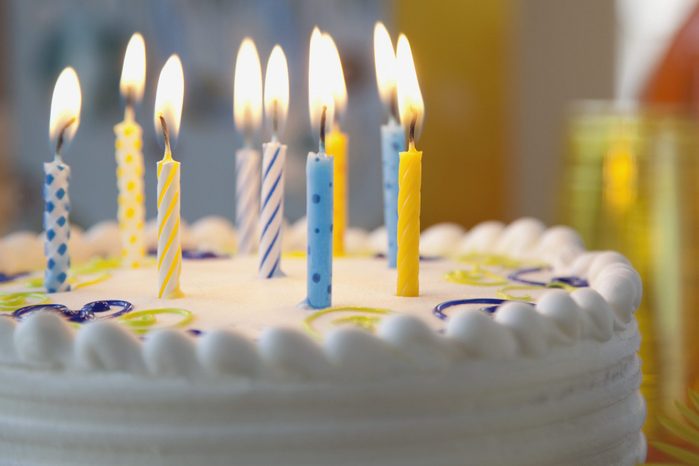
Why do we eat cake on birthdays?
No one is complaining about this tradition, but haven’t you always wondered why we do it? The ancient Egyptians are actually credited with “inventing” the celebration of birthdays. They believed that when pharaohs were crowned gods, it represented their “birth” as a god and that the day needed to be celebrated. The ancient Greeks borrowed the tradition and decided it would be even better with the addition of a sweet treat. They made moon-shaped pies to honor Artemis, goddess of the moon, and added lit candles to make the cakes shine like the moon. That’s where we get birthday candles from. Since the ingredients to make a cake were pretty expensive, the tradition didn’t become popular until around the Industrial Revolution, when the ingredients started to become more plentiful.
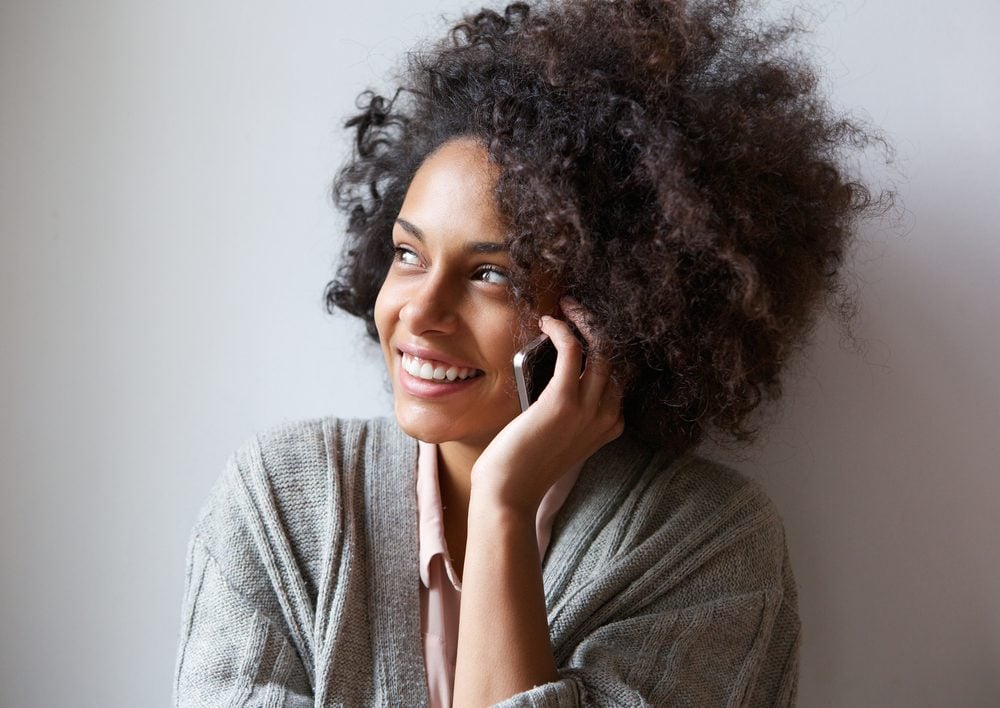
Why do we say “hello” when we answer the phone?
Back in the day, telephone lines would constantly stay open, so businesses could communicate with each other whenever they wanted, similar to walkie-talkies. The only problem was letting the other side know when you wanted to start a conversation. Thomas Edison suggested that callers say “hello” when they wanted to let the other person know that they were ready to talk.
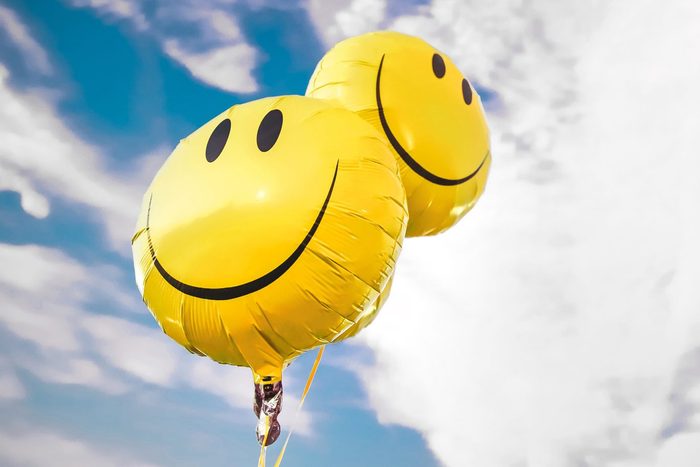
Why does a smiley face symbolize happiness?
After an insurance company in Worchester, Massachusetts, went through a series of tough transitions in 1963, it hired a graphic designer to create an image to boost morale. The designer came up with a smiling face on a yellow background. At first, it was just printed around the office to put a smile on everyone’s face, but it quickly gained popularity. Now its positive message reaches across the world.
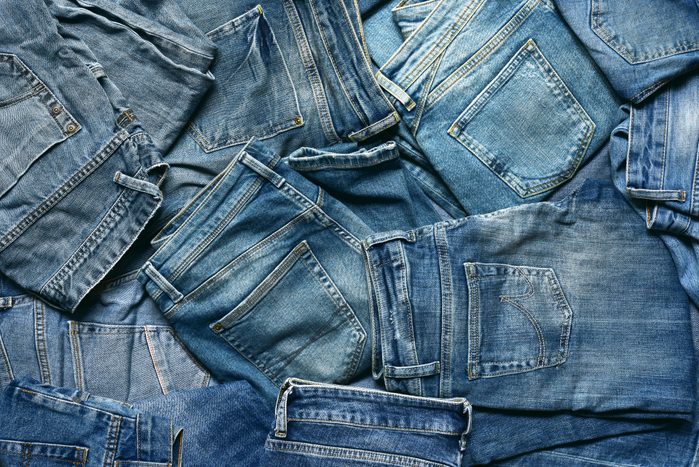
Why is denim blue?
Have you ever wondered why most denim is a shade of blue? The color blue was chosen for denim because of the chemical properties of the blue dye. Most dyes will permeate fabric in hot temperatures, making the color stick, but the natural indigo dye used on denim only stuck to the outside of the threads. The more indigo-dyed denim gets washed, the more the color fades and the threads loosen, making them feel worn-in. People loved the softness of well-worn jeans, and they quickly gained popularity.
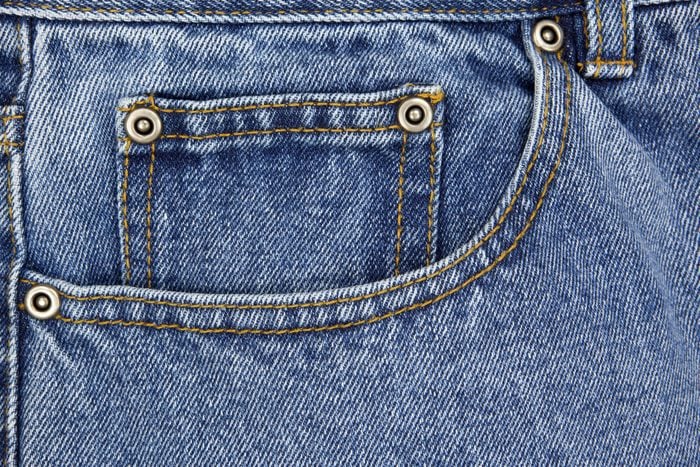
Why do jeans have those tiny pockets?
Those tiny pockets in your jeans seem pretty pointless, but they actually served a purpose back in the 1800s. It’s called a watch pocket because it was originally intended as a safe place for men to store their pocket watches. It dates back to Levi’s first-ever pair of jeans, which hit the market in 1879. Now that you know about the watch pocket, find out what a.m. and p.m. stand for.
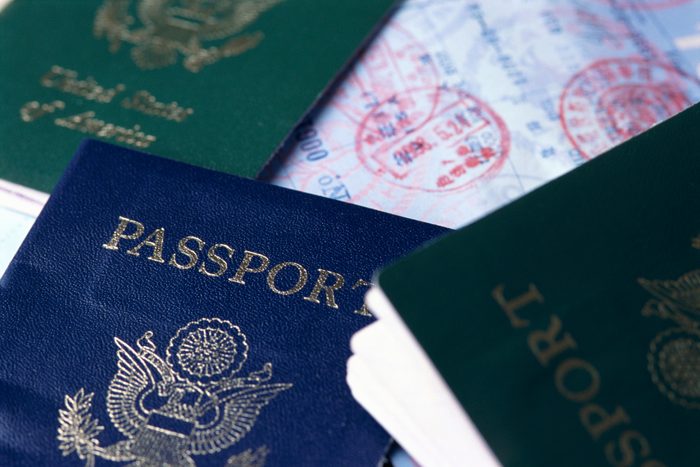
Why do passports only come in four colors?
The International Civil Aviation Organization requires that all countries use a specific typeface, type size, and font for all official documents, including passports. Even though there are a lot of requirements that passports have to meet, the specific color isn’t actually one of them. But most countries choose to use simple dark shades of red, green, or blue because they look more official and they hide dirt and wear.
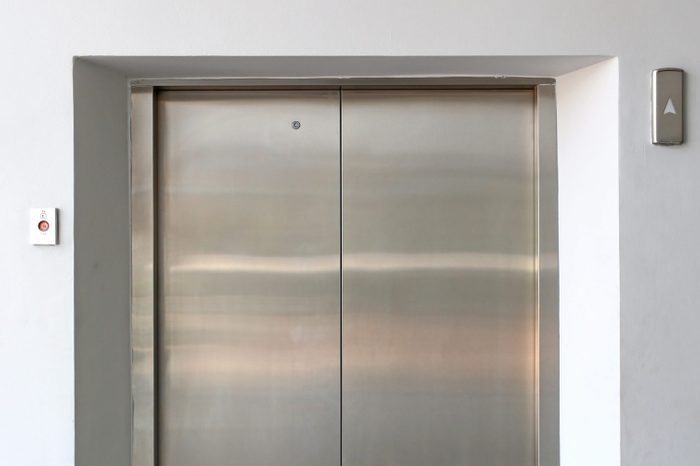
Why do elevators have tiny holes in them?
Have you ever noticed a tiny hole on an elevator door? Well, it might just save your life. The hole is used in emergencies when the elevator doors won’t open and people are stuck inside. A key is inserted into the hole, releasing the elevator’s landing door so anyone onboard can get to safety.
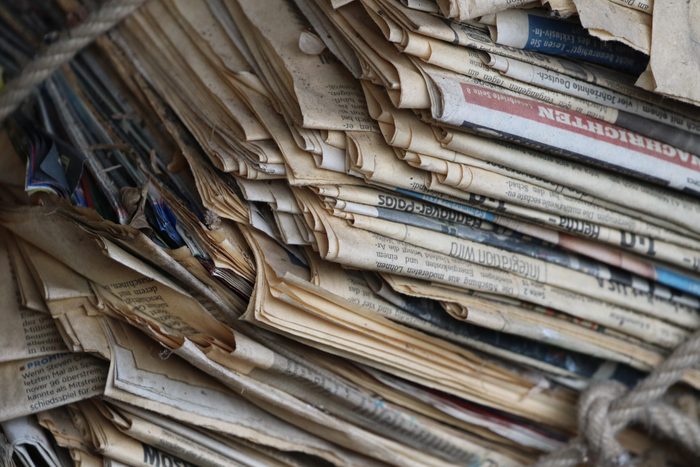
Why do old newspapers turn yellow?
If you’ve ever seen old newspapers piled up at your grandparents’ house, you’ve probably noticed that they eventually yellow. The paper changes color due to a process called oxidation. When newspapers are exposed to air and sunlight, a chemical process causes them to absorb more sunlight and darken from white to yellow.
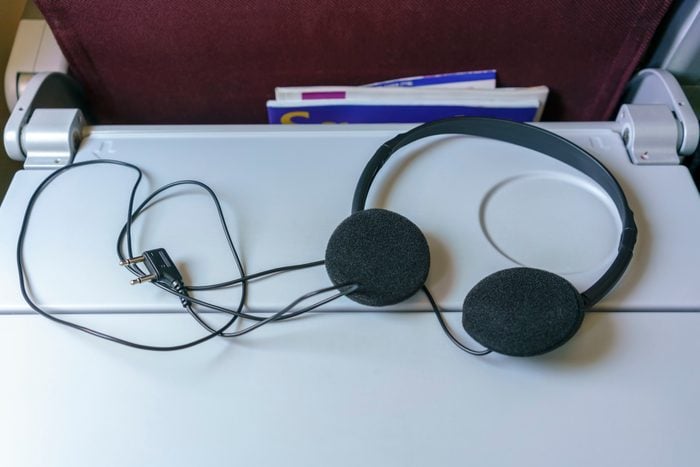
Why do airplanes use two-pronged headphones?
With nothing much to do while you travel from here to there, you probably think of a bunch of questions during a flight, like why airplane windows are round and why airplanes use two-pronged headphone jacks. Most audio devices use a 3.5-millimeter headphone jack. If you’re crinkling your forehead in confusion right now, just think of all the devices you stick headphones in: your smartphone, game console, and portable DVD player among them. The exception is commercial airplanes. The reason airlines use two-pronged jacks comes down to the technology. The 3.5-millimeter jacks have three connections (on the right, left, and bottom), but if one of these connections break, all audio is lost. The two-pronged jacks are designed to keep functioning even if one of them breaks.
Sources:
- Scientific American: “Why Do Our Fingers and Toes Wrinkle During a Bath?”
- Susan Bass, Big Cat Rescue
- Jo B. Paoletti, University of Maryland
- Smithsonian Magazine: “Why Do We Hiccup? And Other Scientific Mysteries—Seen Through the Eyes of Artists”
- NPR: “Where Did Agriculture Begin? Oh Boy, It’s Complicated”
- HuffPost: “Here’s Why Seashells Sound Like the Ocean”
- The Law Dictionary: “Why Do Policemen Touch Your Tail Light When They Pull You Over?”
- Matthew P. Walker, PhD, University of California–Berkeley
- The Conversation: “The very strange history of the Easter Bunny”
- Michael Steele, Wilkes University
- Smithsonian Magazine: “Why Are Some People Left-Handed?”
- The Conversation: “Birds use massive magnetic maps to migrate – and some could cover the whole world”
- Britannica: “Why Is a Baker’s Dozen 13?”
- Today I Found Out: “The Origin of “Say Cheese” and When People Started Smiling in Photographs”
- Thrillist: “The Reason Traffic Lights Are Red, Yellow, and Green”
- Monroe Aerospace: “What’s the Deal With the Weird Headphone Jacks in Commercial Airplanes?”
